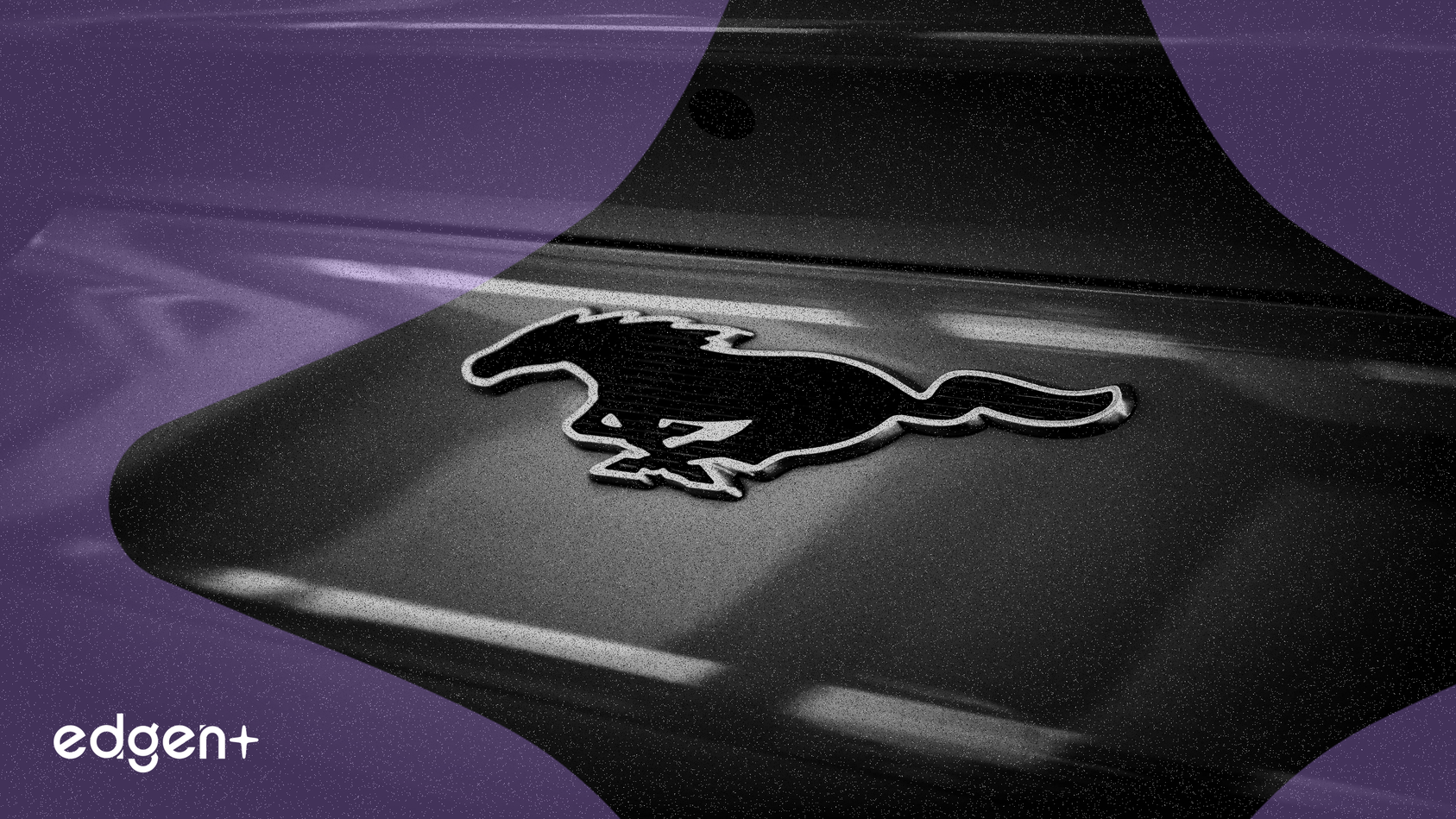Products
Trading Strategies
Markets
Ask AI About DUST

No Data Yet

Aster DEX recorded over $57 million in 24-hour spot trading volume for its **$4/USDT** pair, second only to **$ASTER/USDT**, following the rapid launch of 10 new meme tokens and associated **S3** mining incentives and airdrop plans. ## The Event in Detail In a 24-hour period, **Aster DEX** registered a spot trading volume exceeding **$57 million** for its **$4/USDT** pair. This volume positions the **$4/USDT** pair as the second most actively traded asset on the platform, surpassed only by the native **$ASTER/USDT** pair. This surge in activity is attributed to the recent introduction of 10 new meme tokens on the exchange, including **币安人生**, **客服小何**, **财务自由**, **SZN**, and **DUST**. These launches were accompanied by **S3** mining incentives and airdrop programs designed to reward user participation in transactions. The broader context for **Aster DEX** indicates robust platform growth. Following its Token Generation Event (TGE), the native **$ASTER** token achieved a total trading volume exceeding **$310 million** within its first 24 hours, attracting over 330,000 new unique wallet addresses. The platform's total value locked (TVL) concurrently increased by **$660 million**, reaching **$1.005 billion**. The **$ASTER** token, which opened at **$0.03015**, reached an intraday high of **$0.528**, marking an approximate daily increase of 1,650%. Furthermore, **Aster DEX** recorded a total daily trading volume of **$1.5 billion** across all pairs, demonstrating significant capital inflows. On October 6, **Binance** listed **ASTER** with **USDT**, **USDC**, and **TRY** pairs, resulting in a 53.86% jump in trading volume to **$1.9 billion** and a weekly trading volume exceeding **$2 billion**. **Binance** applied a "Seed Tag" to **ASTER**, indicating a promising yet potentially higher-risk asset, but notably charged no listing fee. ## Financial Mechanics and Strategic Context **Aster DEX** functions as a decentralized perpetual exchange, a product of the 2024 merger between Astherus and APX Finance. The platform operates across major blockchain networks, including **BNB Chain**, **Ethereum**, **Solana**, and **Arbitrum**. It offers three distinct trading modes: a Spot Mode with an order book interface, **1001x** for on-chain perpetual trading, and a Perpetual Mode also utilizing an order book. To optimize capital efficiency, users can leverage yield-bearing collateral such as liquid-staked **BNB** (**asBNB**) and a native yield-generating stablecoin (**USDF**). The **ASTER** token, a **BEP-20** asset with a maximum supply of 8 billion units, plays a crucial role in the platform's ecosystem. It grants holders governance rights, allowing participation in votes on protocol upgrades, fee adjustments, and treasury management. Additionally, holding **ASTER** provides trading fee discounts and incentivizes community engagement through staking and buyback programs. The token's distribution allocates 53.5% to community rewards and airdrops, 30% to ecosystem and community development, 7% to the treasury, 5% to the team, and 4.5% for exchange liquidity and listing. **Aster DEX**'s **Stage 3** launch introduces enhanced features and incentives, including spot trading rewards that contribute to **Rh Points**, multi-dimensional scoring for all traders based on metrics like trading volume and asset holdings, and symbol-specific boost multipliers. This stage is scheduled to run for five weeks, concluding on November 9, 2025. Genesis **Stage 2** Airdrop rewards became claimable on October 14, 2025, offering immediate access without a locking period. The rapid introduction of meme tokens, coupled with comprehensive incentive programs like **S3** and **Stage 3**, positions **Aster DEX** with a growth-centric strategy. This approach aims to quickly expand its user base and trading activity by leveraging speculative interest in new assets and converting it into sustained engagement through robust reward mechanisms, establishing its standing as a flagship DEX on **BNB Chain**. ## Broader Market Implications The significant trading volume generated by meme tokens on **Aster DEX** underscores a persistent and strong investor appetite for high-risk, high-reward digital assets within the **Web3** ecosystem. This activity, while potentially attracting new users and liquidity, also highlights the inherent volatility and speculative nature prevalent in certain segments of the cryptocurrency market. The platform's success in achieving substantial trading volumes and user growth, evidenced by over 330,000 new unique wallets, solidifies its position as a prominent decentralized exchange, particularly within the **BNB Chain** ecosystem. **Aster DEX**'s multi-chain operational strategy, coupled with its advanced trading features like perpetuals and yield-bearing collateral, indicates a strategic focus on developing a comprehensive DeFi infrastructure. The strong performance of the **$ASTER** token post-TGE and its subsequent listing on **Binance**, even with a "Seed Tag," suggests increasing institutional recognition and interest in nascent but promising DeFi projects. While the immediate surge in meme token trading could be driven by short-term speculative interest, **Aster DEX**'s integration of these tokens within broader, sustained incentive programs, such as **S3** and **Stage 3** rewards, represents an effort to convert transient attention into long-term platform engagement. The announced roadmap, which includes the development of its own **Layer 1** blockchain, **Aster Chain**, and intent-based trading systems, further signals a strategic vision for long-term growth and innovation in the decentralized finance landscape.

## Executive Summary The cryptocurrency ecosystem is experiencing a significant evolutionary phase, marked by prominent projects enhancing scalability, interoperability, and functional diversity. **Movement Network** is transitioning from a sidechain to a sovereign Layer 1 blockchain, targeting performance metrics of over 10,000 transactions per second (TPS) and sub-second finality. Simultaneously, the **XRP Ledger** has launched its Ethereum Virtual Machine (EVM) sidechain on mainnet, integrating smart contract capabilities into its ecosystem and witnessing a rapid influx of decentralized finance (DeFi) activity. Concurrently, major trading platform **eToro** is actively exploring the development of its own proprietary blockchain infrastructure to accommodate millions of monthly transactions and expand its tokenized asset offerings. These strategic shifts, alongside other notable developments such as **Cardano's Midnight privacy sidechain** and **LayerZero's integration with Rootstock**, underscore a collective industry push towards a more robust and interconnected Web3 landscape. The market anticipates increased liquidity and diversified application development, though the rapid pace of innovation may introduce heightened volatility. ## The Event in Detail Several key players are spearheading advancements in blockchain infrastructure. **Movement Network's Layer 1 Evolution** Move Industries, a core contributor to the **Movement Network**, announced on September 17, 2025, its network's evolution from a sidechain architecture to a sovereign Layer 1 (L1) blockchain. This upgrade aims to deliver a significant performance boost, targeting over 10,000 TPS with sub-second transaction finality, a substantial improvement from its previous 500-600 TPS capacity. The L1 architecture will facilitate native **MOVE** token staking, exclusively for unlocked tokens to ensure equitable community participation, and will incorporate advanced **Move 2.0** programming language features, including enum types and function values. A public testnet is slated for an imminent launch, with the mainnet migration anticipated by the end of 2025. The transition is designed to be transparent, ensuring existing funds, smart contracts, and network activity remain undisturbed. This strategic shift positions Movement for enhanced real-world asset tokenization and mobile-first experiences, while also eliminating the single-point-of-failure inherent in its previous centralized sequencer model. **XRP Ledger's EVM Sidechain Launch** The **XRP Ledger (XRPL)** has officially launched its EVM sidechain on mainnet, marking a pivotal moment for Ethereum compatibility and smart contract programmability within the XRPL ecosystem. Developed in collaboration with Peersyst, this sidechain allows developers to build, port, and deploy cross-chain and EVM-native decentralized applications (dApps), leveraging XRPL's liquidity and operational stability. David Schwartz, Chief Technology Officer of Ripple and co-creator of the XRP Ledger, noted that the EVM sidechain provides "a flexible environment for developers to deploy EVM-based applications, while maintaining a connection to the XRPL's efficiency. It extends the capabilities of the ecosystem without changing the fundamentals that make the XRPL reliable." Ferran Prat, CEO of Peersyst, emphasized that this launch "unlocks a new era for **XRP** — one where it can flow seamlessly across the multichain world." The sidechain integrates with the **Axelar bridge**, facilitating connections to over 80 blockchains and enabling **XRP** as a native gas asset. Its initial week saw nearly 1,400 smart contracts deployed and a Total Value Locked (TVL) surge to $120 million, demonstrating strong demand for lower transaction fees and faster processing compared to the Ethereum mainnet. **eToro's Exploration of Proprietary Blockchain** Online brokerage **eToro Group Ltd.** is exploring partnerships for the potential launch of its own blockchain network, as confirmed by CEO Yoni Assia. The company is in discussions with "four or five" distinct blockchain ecosystems for a sidechain solution, with a launch projected several months away. This initiative aims to support eToro's ambition to process millions of monthly transactions on crypto rails. The company recently introduced tokenized stocks on Ethereum, offering 24/7 trading for 100 prominent U.S. companies and ETFs to European users, a move that mirrors competitor **Robinhood Markets Inc.** Assia highlighted the necessity of a dedicated blockchain, stating, "We can't run today the millions of transactions that we're transacting on a monthly basis on existing blockchains. We'll need, by definition, to have a dedicated blockchain if we want to run the entire eToro ecosystem." The tokenization process, which converts traditional stocks into digital **ERC20** assets, reduces trading costs and enables round-the-clock market operations, with future considerations for private company tokenization. **Other Significant Developments** Beyond these major undertakings, **Cardano's Midnight privacy sidechain** has detailed its "Glacier Drop" tokenomics, outlining the community-driven distribution of 24 billion **NIGHT** tokens to holders across various blockchains, including **Cardano**, **Bitcoin**, and **Ethereum**. Eligibility criteria include a minimum holding of $100 equivalent in native assets at a historical snapshot. Additionally, **LayerZero** is connecting to the **Bitcoin sidechain Rootstock**, and **Wormhole** is integrating with **XRPL**, further enhancing cross-chain interoperability. ## Market Implications These concerted efforts to enhance blockchain scalability and interoperability carry profound market implications. The advancements from **Movement Network** and the **XRP Ledger** are expected to significantly boost liquidity and foster the development of novel DeFi applications by providing more efficient and cost-effective environments for smart contracts. The increased cross-chain functionality, facilitated by projects like **Axelar**, **Squid**, **LayerZero**, and **Wormhole**, is crucial for creating a more unified and accessible Web3 ecosystem, allowing assets and data to flow more freely between disparate chains. The strategic move by platforms like **eToro** to embrace tokenized assets and consider proprietary blockchain solutions signals a growing confluence between traditional finance and the decentralized Web3 space. By reducing trading costs and enabling 24/7 market access for traditional securities, eToro's initiative, mirroring **Robinhood's** approach, could accelerate institutional adoption and broaden the appeal of blockchain technology to a mainstream investor base. This trend suggests a potential diversification of smart contract platforms and a more competitive landscape for underlying blockchain infrastructure. While these developments promise a more robust and interconnected future, the rapid evolution and technical complexity may contribute to continued market volatility, particularly as new solutions are tested and refined. ## Expert Commentary Industry leaders have provided insights into these transformative developments. David Schwartz, CTO of Ripple, underscored the strategic value of the XRPL EVM Sidechain, stating: > "The XRPL EVM Sidechain introduces a flexible environment for developers to deploy EVM-based applications, while maintaining a connection to the XRPL's efficiency. It extends the capabilities of the ecosystem without changing the fundamentals that make the XRPL reliable." Ferran Prat, CEO of Peersyst, emphasized the broader impact on the XRP ecosystem: > "With the launch of XRPL EVM, we're unlocking a new era for XRP — one where it can flow seamlessly across the multichain world. This isn't the finish line; it's Day 1 of a much bigger journey toward interoperability, programmability, and utility at scale." Yoni Assia, CEO of eToro, articulated the necessity of building proprietary infrastructure to support the company's growth and ambition in tokenized assets: > "We can't run today the millions of transactions that we're transacting on a monthly basis on existing blockchains. We'll need, by definition, to have a dedicated blockchain if we want to run the entire eToro ecosystem." ## Broader Context The ongoing shifts reflect a broader industry trend towards optimizing blockchain performance and addressing the limitations of earlier designs. The pursuit of high TPS and sub-second finality by **Movement Network** aligns with advancements seen in new Layer 1 contenders. For instance, **Hyperliquid**, a decentralized exchange, operates on a purpose-built L1 that can handle up to 100,000 orders per second with 0.2-second latency. Similarly, **Monad** aims for 10,000 TPS with one-second finality through parallel transaction execution, while **The Open Network (TON)** boasts a theoretical throughput of 125,000 TPS with sub-three-second finality. The proliferation of EVM-compatible sidechains, exemplified by **XRPL EVM Sidechain** and **HyperEVM**, indicates a strategic choice to leverage Ethereum's developer ecosystem while achieving greater scalability and lower costs. This approach is also evident in specialized L1s like **Berachain**, which uses a Proof of Liquidity (PoL) consensus mechanism to incentivize network efficiency for DeFi applications. The move by major platforms like **eToro** and **Robinhood** into tokenized securities, utilizing frameworks like **ERC20** and layer-2 solutions such as **Arbitrum**, highlights a growing institutional confidence in blockchain technology as a robust foundation for next-generation financial services. This strategic convergence of traditional and decentralized finance is driven by the clear benefits of reduced operational costs, enhanced liquidity, and continuous market access, reshaping the competitive landscape of digital asset trading. These developments collectively point towards a future where blockchain technology is not just an alternative, but an integrated and indispensable component of the global financial infrastructure.
Dust Protocol (DUST) current price is $0.001841, down 84.13% today.
Dust Protocol (DUST) daily trading volume is $444.8K
Dust Protocol (DUST) current market cap is $61329
Dust Protocol (DUST) current circulating supply is 33.2M
Dust Protocol (DUST) fully diluted market cap (FDV) is $61329